I'd like this course by Rinotuna!
- 01. Orientation
- Course goals & required tools
- Photoshop setup
- Mindset preparation
- 02. Brush Blending Formulas
- What is blending?
- Hard brush blending techniques
- Airbrush blending tips
- 03. Layer Blending Modes
- Understanding tone-tuning tools
- How to use six blending modes for effective shading
- 04. Light & Shadow Formula
- Concepts of form and drawing: overlapping and foreshortening
- Visualizing shapes and sightlines
- The rule: invisible planes become shadows
- Viewing direction equals lighting direction
- 05. Highlight Placement FormulaWhy do highlights appear?Surfaces where highlights form: incidence, reflection, and normalsExpanding highlight areas
- 06. [Student Work Review] Logical Shadow CalculationIdentify awkward areas in full- or half-body illustrationsSimplify into shapes and rebuild formsRecalculate and reconfigure shadow locations
- 07. Bonus: Simplified Human Figure Drawing 01
- 08. Bonus: Simplified Human Figure Drawing 02Selections from the first series of Rinotuna’s lectures to aid smooth learning
- SECTION 02
Fixing Shadow Mistakes & Understanding Deeper Structure
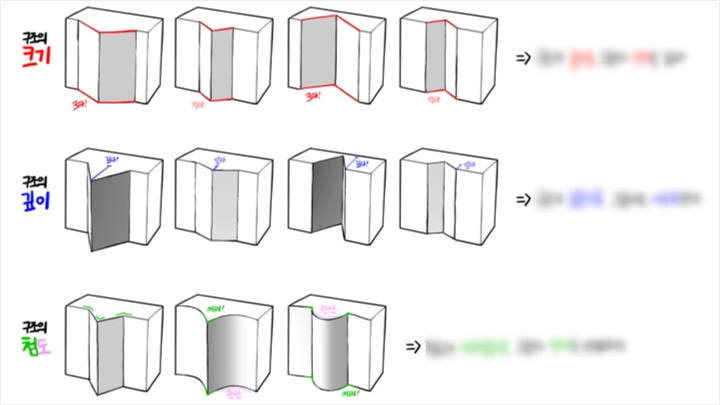

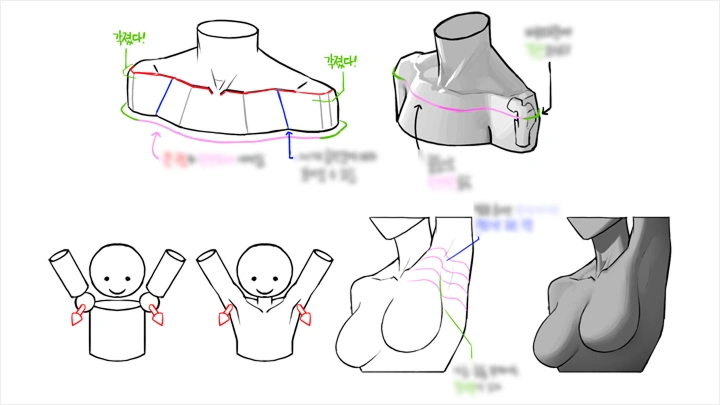
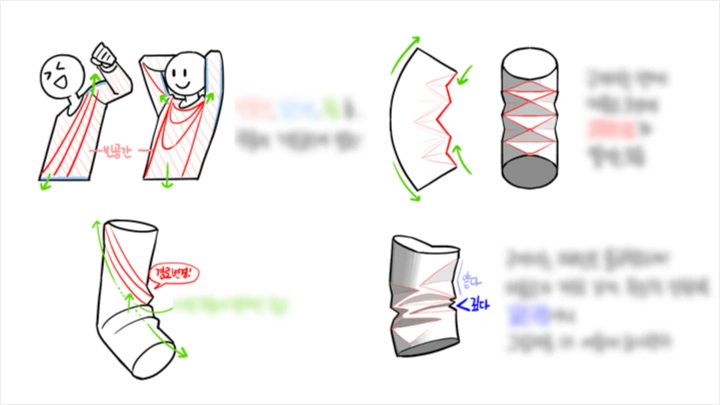
- 10. [Student Feedback] Direct Sunlight Shading Error 01: FaceStructural differences in male vs. female facesShading by style: deformation and difference
- 11. [Student Feedback] Error 02: Upper Body & Shoulder StructureWhat to focus on: structure or form?Female upper body: structure-centric shadingMale upper body: form-centric shadingAligning vision and structure
- 12. [Student Feedback] Error 03: Lower Body & Pelvis StructureSilhouette vs. structure conflictsStarting from inner pelvis, not outlineUnderstanding thigh cross-sections (think tear-drop shape)Hip rendering: mound and cavity structuresChoosing expression style and tools
- 13. Reflected Light & Occlusion ShadowWhy subtle tones inside shadows matterRoles of primary light, reflected light, ambient light, and occlusionLayering light/shadow by hierarchyThree-checkpoint light and shadow checklist
- 14. [Student Feedback] Clothing Folds Analysis 01: PrinciplesWhy study clothing folds structurally?Three elements: contact point, empty space, force directionFolds develop in empty spaceDirection of force dictates fold flowThe 3 structural properties of folds
- 15. [Student Feedback] Clothing Folds Analysis 02Folds are for understanding, not copyingExplore a taxonomy of nine types of folds
- 16. From Simple to Complex Structure ModelingShift from ‘drawing structure’ to ‘building structure’Three-stage structure modeling: size, depth, sharpnessStep-by-step modeling routineExamples by clothing fit: overlaying structure on basic shapesExpanding drawing into 3D shaping
- SECTION 03
From Application to Practice: Mastering Shadows with Flexibility
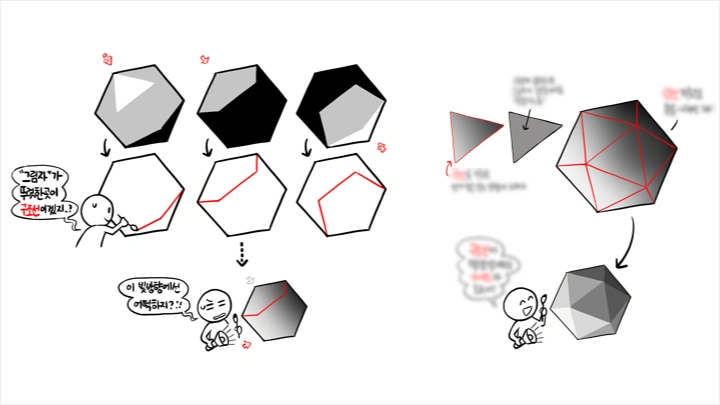

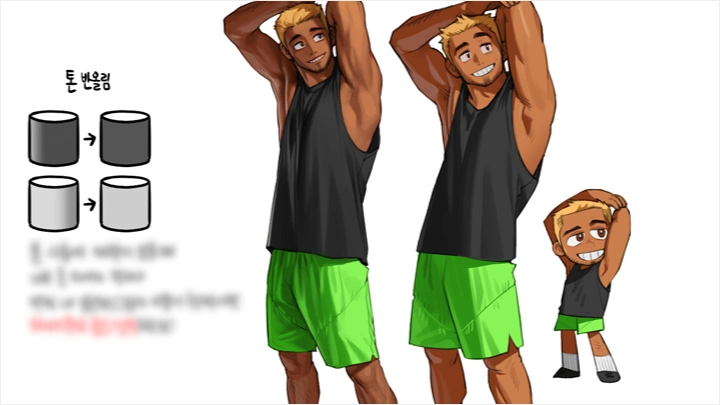
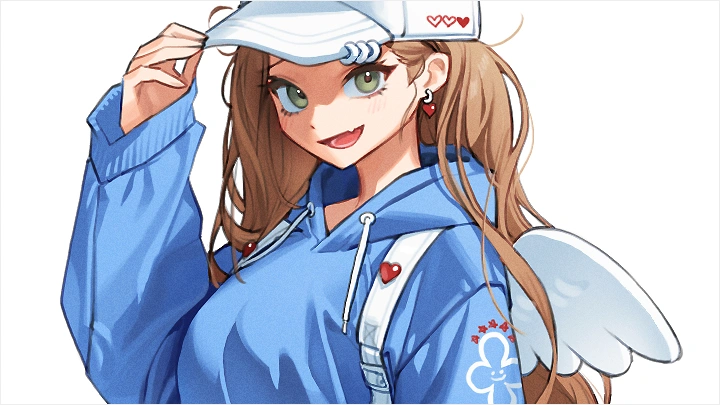
- 18. [Student Feedback] Tone DistributionWhy aren’t planes uniformly shaded?Lambert cosine curve theoryWhy evenly divided tones feel flatDesigning tone distribution by structure
- 19. Coloring Stage GuideSketch: structural planning from doodlesShadow layout: two-tone plan based on structureColor and brightness: light direction & tone compressionTone detail: refine structure and surface materialsFinal: adjust overall tonal balance
- 20. [Student Feedback] Style-Based Shading ApplicationCasual, realistic, cel-shaded style approachesWhat is tone deformation?Comparing shading by styleGuidelines: what to preserve and what to adaptStyle variation case studies
- 21. Practice Project 01: Male CharacterStrong bodily muscular structureRich contrast in tone
- 22. Practice Project 02: Female CharacterSoft anatomy with crisp clothing fold sharpness
- SECTION 04
Outro
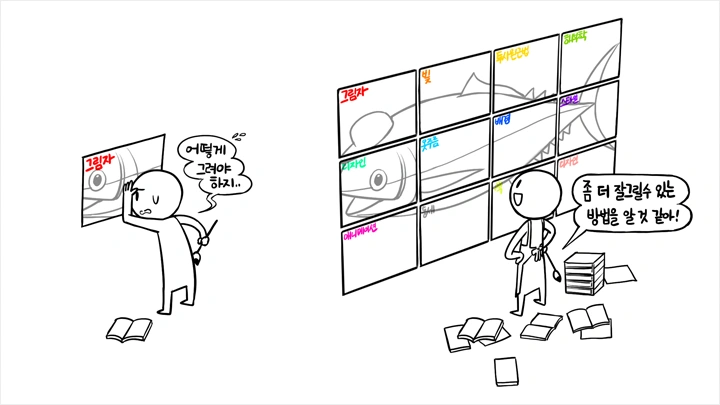
- 23. Easy-to-Miss CheckpointsIs the form simplified yet consistent?Do forms look like spatial structures?Is the structure rich and properly shaped?Is the tone applied appropriately per structure?Is this based on habit or thoughtful design?
- 24. Final MessageHow to apply what you learned to your artExpanding your studies furtherWhat kind of drawing would you like to create next?

